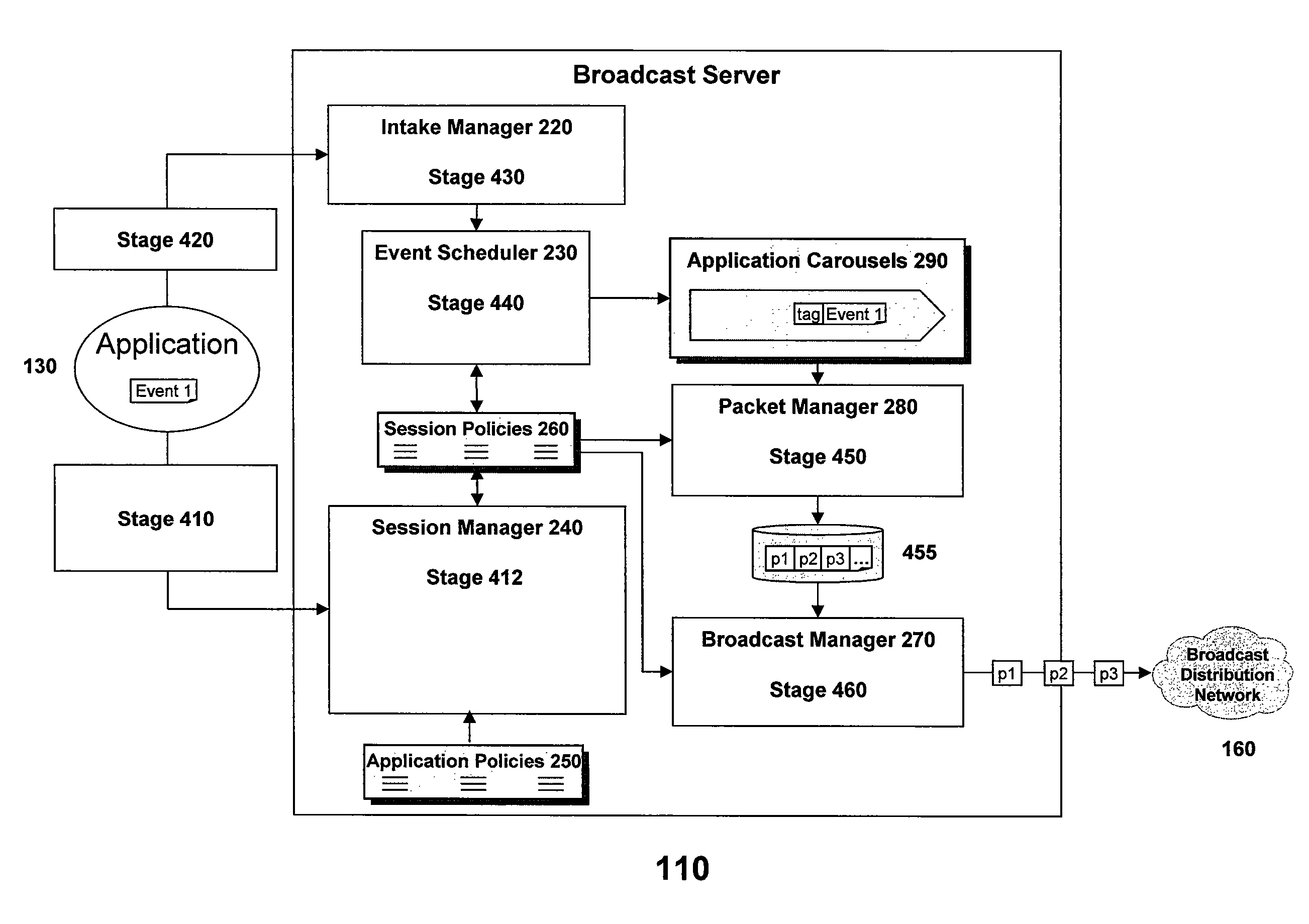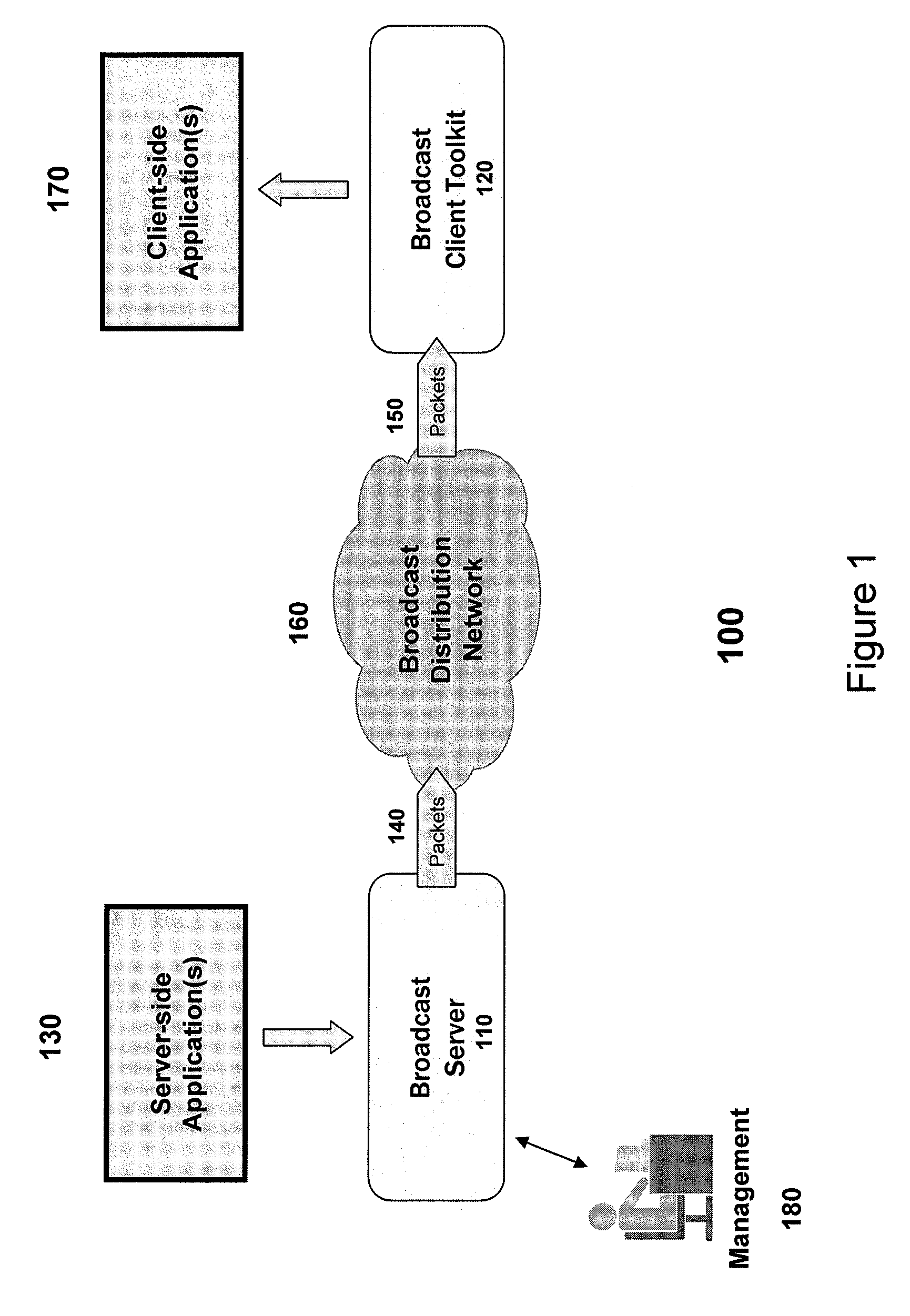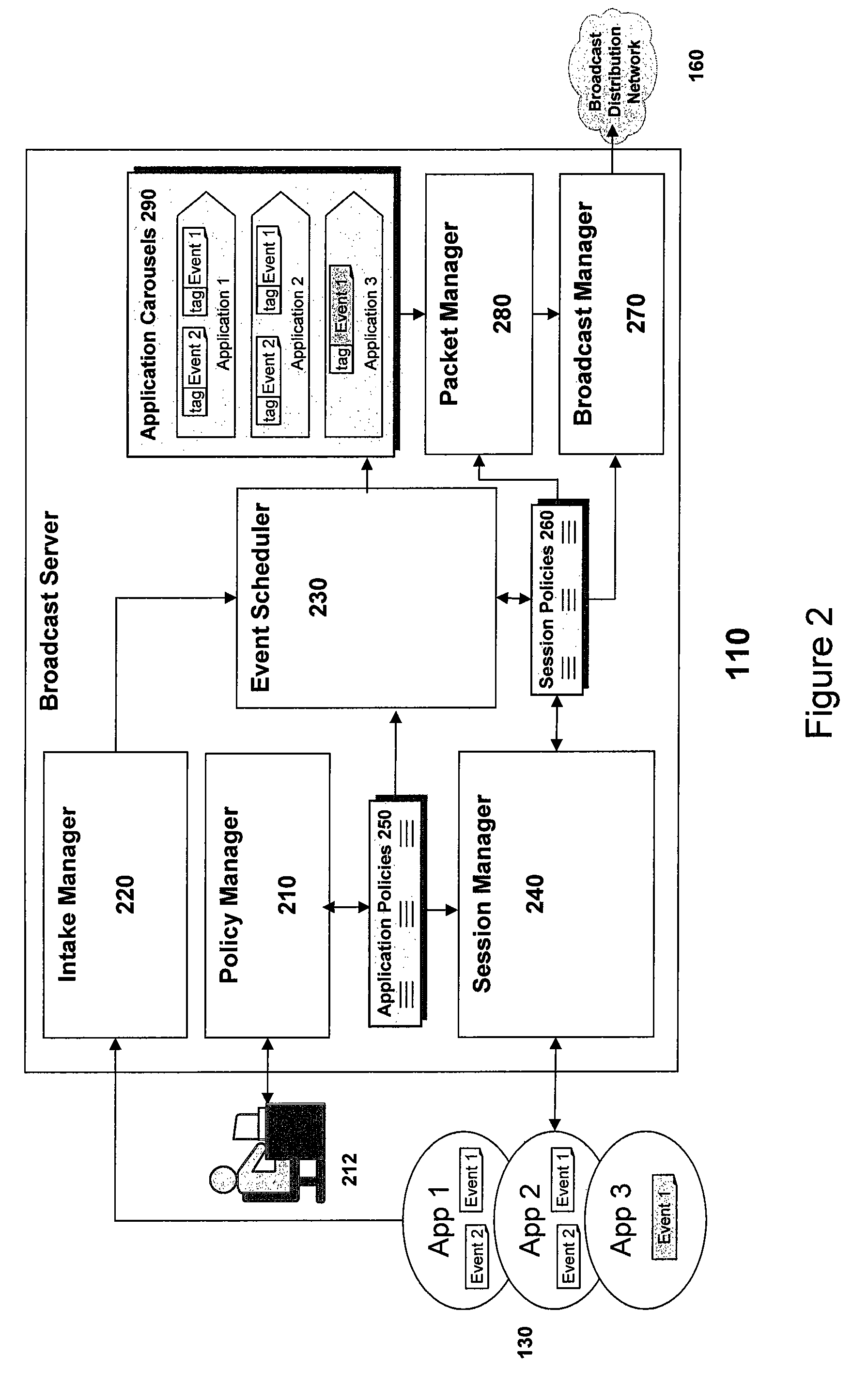Reliable event broadcaster with multiplexing and bandwidth control functions
a technology of applied in the field of reliable event broadcaster with multiplexing and bandwidth control functions, can solve the problems of bandwidth constraints, latency concerns, and inability to efficiently/cost-effectively or available two-way mechanism to pull customized data for each device, and achieve the desired level of service quality
- Summary
- Abstract
- Description
- Claims
- Application Information
AI Technical Summary
Benefits of technology
Problems solved by technology
Method used
Image
Examples
Embodiment Construction
[0043]In order to make the following discussion of the embodiments and benefits of the present invention better and more fully understood, it is useful to introduce certain terms and definitions that will be used. It is to be understood that these terms and definitions are introduced for purposes of clarity and not to place restrictions or constraints upon the embodiments of the invention or the claimed invention.
[0044]In the discussion of the present invention, the following terms will be understood to have the following general meanings:[0045]Carousel. A carousel is a collection of events that are continually broadcast. When the last event in the carousel is broadcast, broadcast continues with the first event in the carousel. Events may be placed on, or removed from the carousel at any time. Each application using broadcast services is allocated one or more carousels. Using multiple carousels enables an application to prioritize different classes of events that it broadcasts.
Event...
PUM
 Login to View More
Login to View More Abstract
Description
Claims
Application Information
 Login to View More
Login to View More - R&D
- Intellectual Property
- Life Sciences
- Materials
- Tech Scout
- Unparalleled Data Quality
- Higher Quality Content
- 60% Fewer Hallucinations
Browse by: Latest US Patents, China's latest patents, Technical Efficacy Thesaurus, Application Domain, Technology Topic, Popular Technical Reports.
© 2025 PatSnap. All rights reserved.Legal|Privacy policy|Modern Slavery Act Transparency Statement|Sitemap|About US| Contact US: help@patsnap.com



